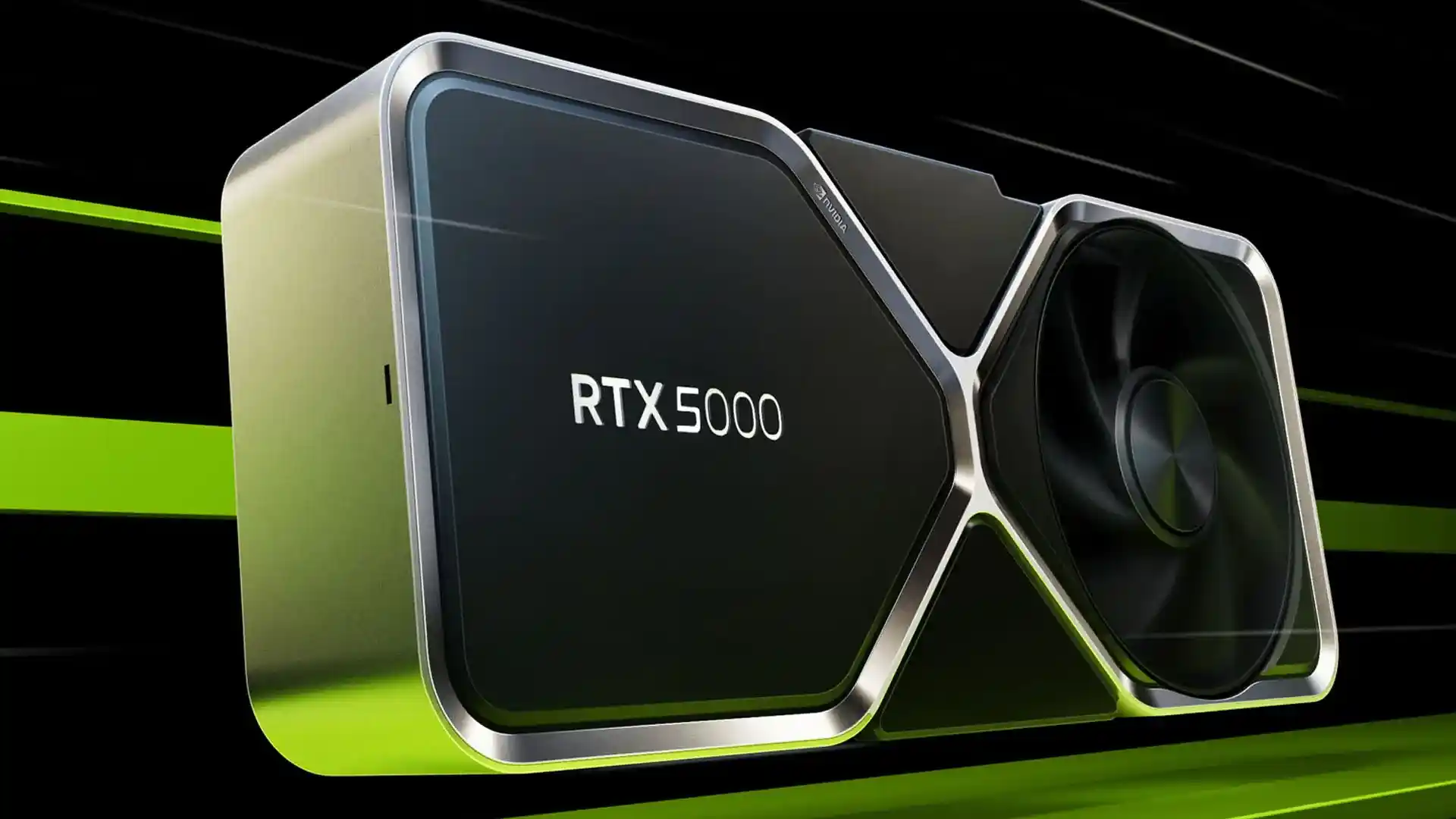If you’re a gamer, creator, or hardware enthusiast, you’ve probably noticed the whispers turning into roars. NVIDIA is cooking something big—and it’s not just another refresh. The company’s upcoming RTX 5000 series is shaping up to be more than just a new product line. It’s a response to shifting market demands, growing competition, and the rising expectations of a user base that wants performance, efficiency, and future-proofing all at once.
After the somewhat divisive reception of the RTX 4000 series—where pricing and performance ratios didn’t quite meet every enthusiast’s expectations—NVIDIA seems poised to strike a better balance with its next generation. With a brand-new architecture, rumored manufacturing changes, and some much-needed design evolution, the RTX 5000 family could be the most important GPU lineup NVIDIA has launched in over a decade.
Let’s break down everything we know so far—and what we can realistically expect.
Why the 5000 Series Matters More Than Ever
This isn’t just another performance bump. The RTX 5000 series comes at a time when the GPU landscape is shifting in several directions at once. AI demand is skyrocketing, cloud gaming is slowly maturing, and gamers are now more price-sensitive than ever. At the same time, AMD is gaining momentum with its latest RDNA architecture, and Intel continues chipping away at the budget and entry-level markets.
NVIDIA can’t afford a stumble. The 5000 series needs to perform, scale well across price tiers, and, ideally, repair some of the goodwill that was strained with the RTX 4070 and RTX 4080 pricing strategies.
There’s also a broader shift in how people use GPUs. It’s no longer just about frame rates. Content creators, AI developers, streamers, and researchers are all relying on consumer-grade cards. That means the RTX 5000 series will need to deliver more than just gaming power.
Blackwell Architecture: A New Foundation
The cornerstone of the RTX 5000 series is expected to be NVIDIA’s new Blackwell architecture. While details remain officially scarce, the architecture has already been previewed in the context of NVIDIA’s AI and data center roadmap. That gives us a few strong clues.
Blackwell is built to improve both performance and efficiency. Unlike Ampere or Ada Lovelace, which focused heavily on raw raster and ray tracing power, Blackwell appears to prioritize a more balanced workload. That includes better AI compute, improved memory bandwidth handling, and smarter power distribution across cores.
There’s strong speculation that NVIDIA will refine its approach to power efficiency in a meaningful way. The 4000 series brought immense power—but also massive power draw. That created cooling challenges and raised questions about longevity, especially in small form-factor systems.
Expect Blackwell to address that directly. Better performance-per-watt is a likely headline.
Rumored Specs and Performance Targets
While nothing is official yet, leaks from typically reliable sources suggest the top-tier RTX 5090 could deliver a 70 to 80 percent performance increase over the RTX 4090. That’s a bold claim, but it wouldn’t be out of character. NVIDIA tends to set new benchmarks with each flagship, even if the gains across the entire lineup are more modest.
Some of the rumored highlights include:
- A new multi-chip module (MCM) design for higher-end cards
- GDDR7 memory on select SKUs, allowing for significantly faster bandwidth
- Improved ray tracing cores and next-gen Tensor cores
- Potentially smaller die sizes with more efficient thermal output
- Optimized DLSS support with new AI-assisted rendering techniques
We’re also likely to see continued emphasis on real-time upscaling and frame generation. DLSS 3 laid the groundwork, but DLSS 4 could be part of this new push—especially as AMD’s FSR continues to improve and gain adoption.
Manufacturing: TSMC Again, But Better?
NVIDIA has leaned heavily on TSMC’s fabrication process for its last two generations, and it’s likely to continue doing so for the 5000 series. The shift could be to a refined 3nm process—or possibly an advanced N4P node—both of which would improve performance while reducing power draw.
What makes this especially important is thermal efficiency. If NVIDIA can reduce heat without sacrificing clock speeds, it opens the door to slimmer cards, better laptop performance, and more headroom for overclockers.
That also makes pricing more flexible. With more efficient yields, NVIDIA could (in theory) offer more competitive pricing without compromising margins.
Pricing and Tier Breakdown: Will NVIDIA Learn From the Past?
This is the real wildcard. The RTX 4000 series faced criticism for inconsistent price-to-performance ratios. The RTX 4080, in particular, suffered from poor positioning and confusing naming. The 12GB variant that was eventually canceled only added to the confusion.
With the RTX 5000 series, NVIDIA has an opportunity to simplify things—and rebuild trust. That means:
- Clear naming conventions (no more rebranding mess)
- Logical pricing tiers that align with performance
- Better availability at launch
- Tiered performance that scales cleanly from 5060 up to 5090
If NVIDIA nails this, it could see a major rebound among mid-tier buyers who sat out the 4000 generation due to price hikes.
Laptop GPUs and Mobile Focus
Another area to watch is the laptop GPU space. The 4000 mobile GPUs brought big performance gains, but they also pushed thermals and battery life to their limits.
With Blackwell, NVIDIA is expected to refocus on mobile efficiency. That could mean:
- More discrete GPU options for thin-and-light laptops
- Improved power scaling to match thermal constraints
- Better integration with AMD and Intel CPUs for shared power management
This matters more than you think. As portable workstations and gaming laptops become more mainstream, the demand for high-efficiency mobile GPUs continues to rise. NVIDIA can’t afford to miss that boat.
AI, Creator Workloads, and Beyond
Gaming will always be a major focus for RTX cards, but creative and AI workloads are now critical use cases. Blender, DaVinci Resolve, Stable Diffusion, and Unreal Engine development all lean heavily on GPU power.
The RTX 5000 series will likely include features tailored to these users:
- Better Tensor Core support for on-device AI processing
- Expanded CUDA capabilities for creative software
- Improved support for real-time rendering engines
- Native compatibility with generative AI workflows
NVIDIA has seen how essential these users are to their long-term ecosystem. It’s no longer just about pushing polygons—it’s about building tools for the next generation of creators.
Release Timeline: What We Know So Far
While no date has been confirmed, all signs point to a late 2025 launch, with teasers and previews expected by early Q4. NVIDIA typically targets fall for major GPU rollouts, often coinciding with its own keynote events or major tech conferences.
The first cards to drop are expected to be the RTX 5090 and 5080, with lower-tier cards like the 5070 and 5060 rolling out in staggered fashion over several months.
Expect limited availability at launch, but a more stable supply chain than the 3000 series debacle, thanks to improved wafer allocation and global logistics planning.
Final Thoughts
The RTX 5000 series isn’t just another generational jump—it’s NVIDIA’s next move in a market that’s evolving rapidly. With AI workloads booming, power efficiency becoming a must-have, and a more informed consumer base than ever before, this generation has to do more than just perform well. It needs to hit the right price, scale across devices, and offer meaningful improvements that go beyond just frame rates.
If the Blackwell architecture lives up to expectations, and if NVIDIA listens to its community on pricing and accessibility, the 5000 series could set a new bar—not just for NVIDIA, but for the entire industry.
Until the official reveal, all we can do is speculate. But based on the signals, this might just be the most important GPU launch since the original RTX line introduced real-time ray tracing.
The future of graphics, AI, and high-performance computing is being built right now—and NVIDIA wants to be the foundation.

